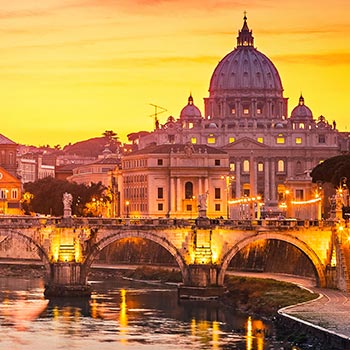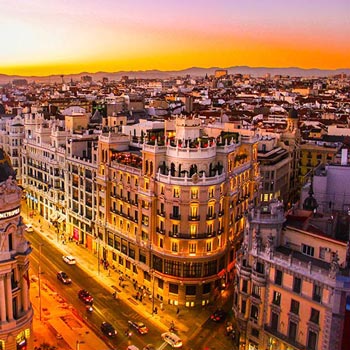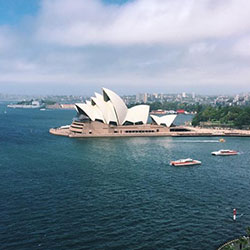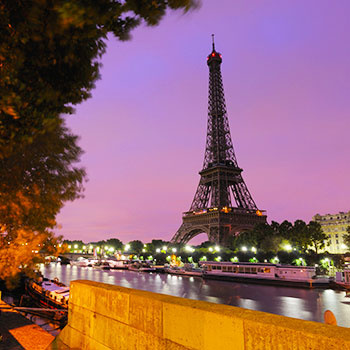Cinema & the City: Cinematic Representations of Rome
Engineering Program
Rome, Italy
Dates: 5/23/18 - 7/7/18

Cinema & the City: Cinematic Representations of Rome
OVERVIEW
CEA CAPA Partner Institution: CEA CAPA Rome Center
Location: Rome, Italy
Primary Subject Area: Film Studies
Other Subject Area: Cultural Studies
Instruction in: English
Course Code: FLM375FCO
Transcript Source: University of New Haven
Course Details: Level 300
Recommended Semester Credits: 3
Contact Hours: 45
Prerequisites: None
Additional Fee: $50.00
Additional Fee Description:This course requires payment of an additional fee to cover active learning components that are above and beyond typical course costs such as site visits, entrance fees, and other expenses.
DESCRIPTION
Since the beginning of the nineteenth century, cities and cinemas have been connected on many different levels: thematically, formally, and industrially. Cinema has always been interested in the representation of the city-life style as well as the human and social conditions it presents. As such cinema, has also greatly focused on the representation of the spatial complexities inherent in cities.
In the words of Richard Wrigley (author of Cinematic Rome), "As cinematic resource Rome has played many roles: lending its venerable ancient settings (or more often their simulated versions), and associated cultural prestige to films of the silent era: providing an archeological and archetypal foundation on which the Fascist narratives of romanità were played out; as the gritty fragmented urban stage for neorealism or subject to Pasolini's polemical repudiation of historic centre: or reduced to the cursory metonymic packaging of cinema-cartolina [cinema-postcard]".
This course will examine Fascist and post-Fascist approaches to the image of Rome, analyzing the innovation introduced by Neorealism and directors such as Roberto Rossellini and Vittorio De Sica. The course further examines Pier Paolo Pasolini's social and spiritual visions of the suburbs and will contrast these with Federico Fellini's Baroque image of the city. Our review will cover genre films, comedies, historical films set in the Antiquity, and crime movies. Additionally, we will compare the different approaches used by American and Italian productions.
The course will provide you with an interdisciplinary framework that brings together Film Studies, Sociology, and Cultural Studies. As a student in this course, you will undertake not only on a metaphorical journey but also on a physical one as you leave the classroom and take to Roman streets. During these experiential-learning activities, you will have the chance to explore the different locations where films were shot to better understand the spatial complexities of the city and the various forms and levels of cinematic representations.
**Due to the interdisciplinary nature of the content, this course is cross-listed with Film Studies (FLM375FCO) as well as Cultural Studies (CUL375FCO). The instructor will provide directions during the first week of class regarding how to choose your desired course code
In the words of Richard Wrigley (author of Cinematic Rome), "As cinematic resource Rome has played many roles: lending its venerable ancient settings (or more often their simulated versions), and associated cultural prestige to films of the silent era: providing an archeological and archetypal foundation on which the Fascist narratives of romanità were played out; as the gritty fragmented urban stage for neorealism or subject to Pasolini's polemical repudiation of historic centre: or reduced to the cursory metonymic packaging of cinema-cartolina [cinema-postcard]".
This course will examine Fascist and post-Fascist approaches to the image of Rome, analyzing the innovation introduced by Neorealism and directors such as Roberto Rossellini and Vittorio De Sica. The course further examines Pier Paolo Pasolini's social and spiritual visions of the suburbs and will contrast these with Federico Fellini's Baroque image of the city. Our review will cover genre films, comedies, historical films set in the Antiquity, and crime movies. Additionally, we will compare the different approaches used by American and Italian productions.
The course will provide you with an interdisciplinary framework that brings together Film Studies, Sociology, and Cultural Studies. As a student in this course, you will undertake not only on a metaphorical journey but also on a physical one as you leave the classroom and take to Roman streets. During these experiential-learning activities, you will have the chance to explore the different locations where films were shot to better understand the spatial complexities of the city and the various forms and levels of cinematic representations.
**Due to the interdisciplinary nature of the content, this course is cross-listed with Film Studies (FLM375FCO) as well as Cultural Studies (CUL375FCO). The instructor will provide directions during the first week of class regarding how to choose your desired course code







